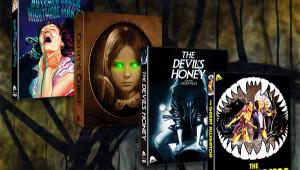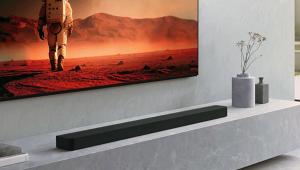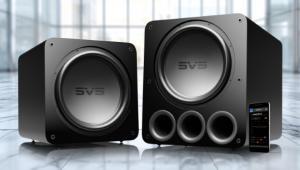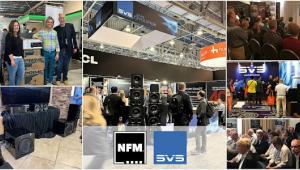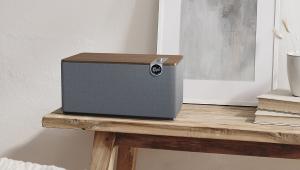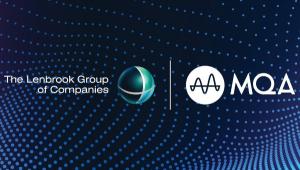Digital Killed the Sound City Studio Star
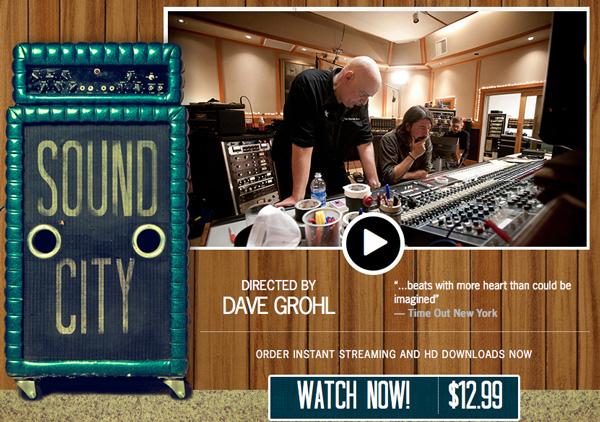
On the other hand, if you’re the Foo Fighters’ frontman, Dave Grohl, and you were the drummer for Nirvana when the band recorded the ground-breaking, career-making album, Nevermind, at this particular studio in 1991, you might feel differently. In fact, far from being a tweak-fest for audio geeks interested in microphones, cables, sliders, and knobs, Sound City is Grohl’s fascinating tribute to the legendary Sound City Studios in Van Nuys, California and the near-mythical Neve 8028, a custom-built, analog mixing console that eventually winds up in Grohl’s own Studio 606. Actually, the film is much, much more than that…
From its beginning in 1969, the list of artists who recorded at Sound City until it closed in 2011 is astounding: Neil Young, Tom Petty & the Heartbreakers, Johnny Cash, Metallica, Nine Inch Nails, Barry Manilow, Fleetwood Mac, South Park, Grateful Dead, Red Hot Chili Peppers, Lenny Kravitz, Evel Knievel(?), and Charles Manson(!). And that list barely scratches the surface of all the musicians who walked through the doors into Sound City’s beat up, dilapidated facilities – many of whom produced some of their best, most notable musical releases there.
While the film’s rapid-fire rundown of famous Sound City alumni at times feels more like a promo for an upcoming concert tour than a traditional documentary, the name-dropping does set the backdrop for the film’s main point – which, essentially, is summed up by Grohl when he says, “In this age of technology, where you can manipulate anything, how do we retain that human element?”
For a variety of reasons, Sound City Studios never embraced the digital audio revolution that has radically changed music in ways both good and bad. The studio continued to be tape-based, with cut-and-splice editing, while other studios began using computers and programs, such as Sound Tools and then Pro Tools, to do editing, sampling, and digital corrections. Grohl’s film points out that, without the digital crutches of programs like Auto-Tune, at Sound City musicians had to be musicians. Shivaun O’Brien, Sound City’s Studio Manager for 20 years, nails it when she comments that, “Sound City was a place real men went to make records.”
The ideal Sound City session involved putting the musicians together in the studio, letting them play, and capturing the resulting magic (on analog tape). It wasn’t easy, and it wasn’t always quick. (Nirvana took 16 days to complete Nevermind.) But, as Metallica’s Lars Ulrich says, “Chemistry is something that happens between people…” – and it’s the amazing artistic alchemical reactions that Sound City was so uniquely able to capture that is what Grohl is ultimately after when he acquires the Neve 8028 mixing console after Sound City goes out of business.
Although the inspiration for the documentary may have been the Neve 8028, for which Grohl felt such attachment, at some point, Grohl says, “The conversation became something much bigger. How do we keep music to sound like people?”
Far from being the archetypal, dispassionate documentary, Sound City is a film that captures the essence of real music – involving real musicians with real faults and real emotions – and somehow brings it to life on the screen (and speakers) in front of you. My 12-year-old daughter complained to me the other day that contemporary music lacked “passion”. Watch Sound City. It’ll give you a few clues as to why much of music today is so passionless – as well as how and why it doesn’t have to be that way. Be prepared, though, Grohl and cast don’t pull any punches; and Grohl is unabashedly opinionated. (He recently said in an interview with British music magazine, NME , that TV talent shows, such as American Idol and The X Factor, reduce music to the point that “everyone sounds like f*ing Christina Aquilera.”)
As far as I’m concerned, this is a “must see” film for anyone interested in music, how it’s made, how it sounds, or how to keep it real. If you’re lucky, you might still have a chance to see Sound City in a theater. If not, it’s absolutely worth the $12.99 to get the movie from iTunes - or less to stream it from an online service. (Watch it in your home theater, though, and not on your computer. The sound, in this case, is more than 50-percent of the experience.) More than a soundtrack to the soundtrack to the film, Sound City – Real to Reel, the album, “features Grohl enlisting the musical legends who recorded at Sound City--and then some (hello, Paul McCartney!) to demonstrate the human element of creating and recording music, teaming up to write and record brand new original songs on the spot.” I haven’t heard the album yet, but if it’s anything remotely similar to the film, it’ll be a definite keeper.
I will confess that, as a young buck in a hi-fi store, fresh out of college, and unencumbered by the weight of personal experience, I rode the digital music bandwagon as hard as anyone. I proudly flew the “perfect sound forever” digital flag and cast aspersions at those Neanderthals who clung to their vinyl records and the cult of the phono cartridge. While I’m not ready to abandon digital audio – and the world at large wouldn’t give a crap if I did, anyway - Sound City is an uplifting and energizing cultural kick-in-the-ass that just might help corrupt much of music’s digital “perfection” with a little bit of grungy human emotion. (Until our robot overlords take over. Then all bets are off.)











